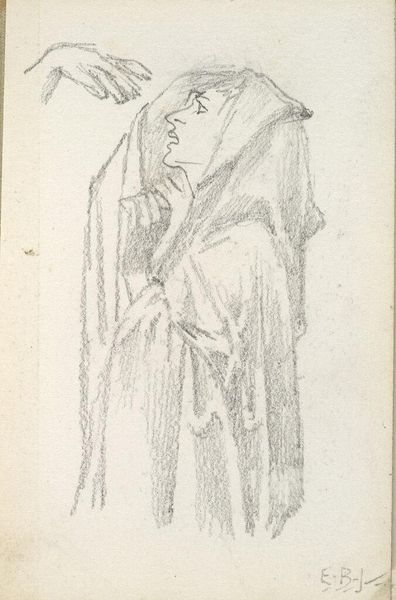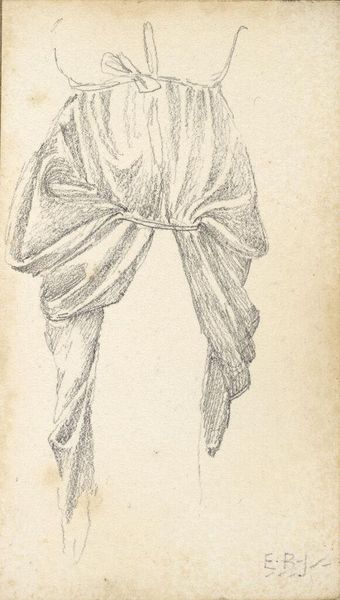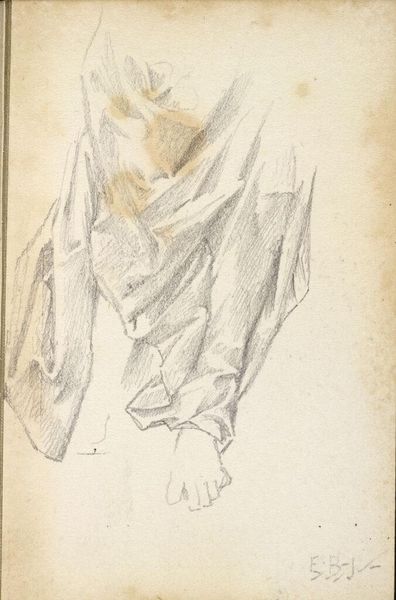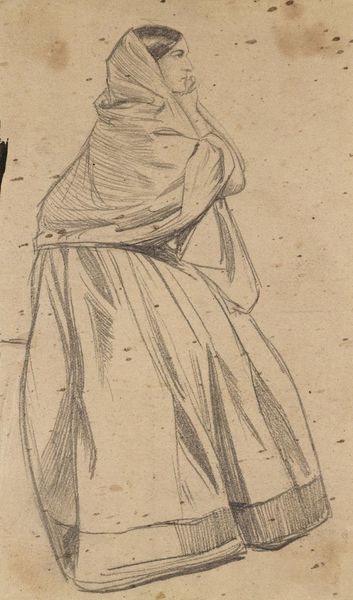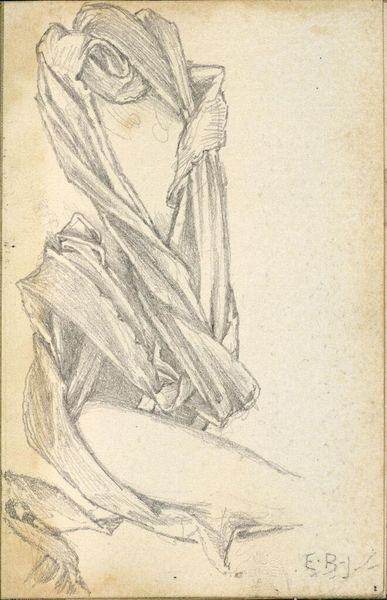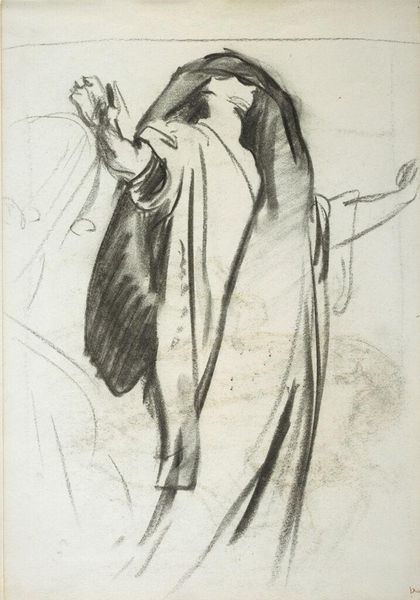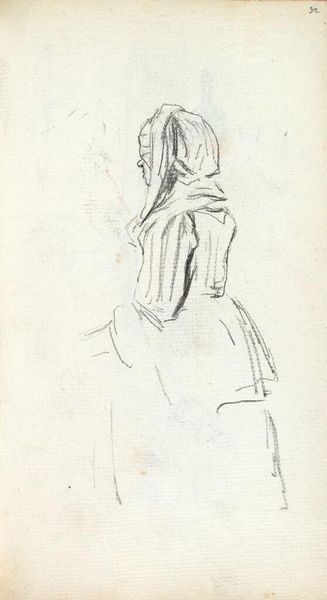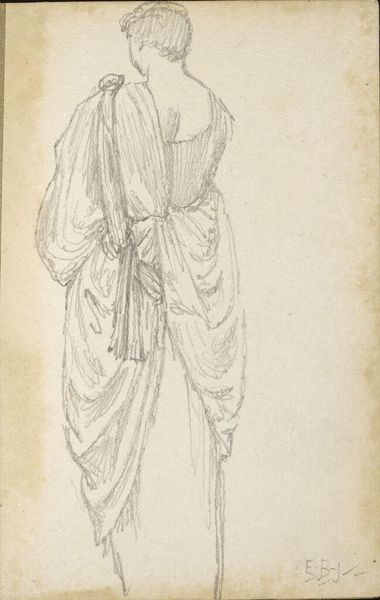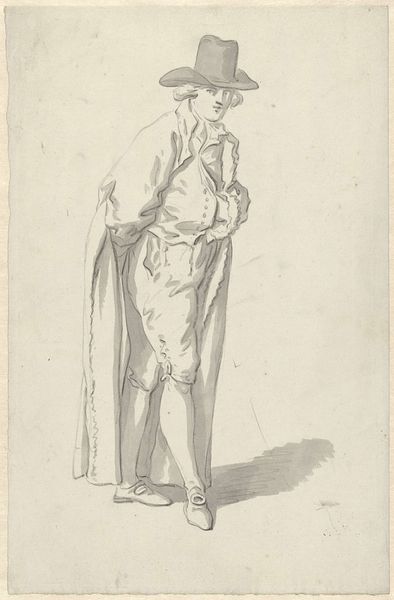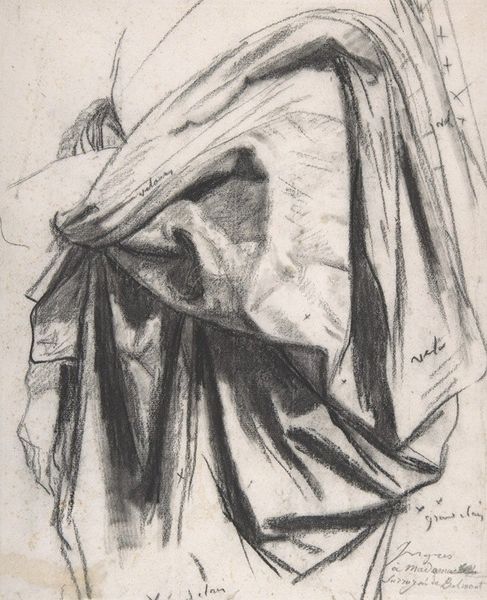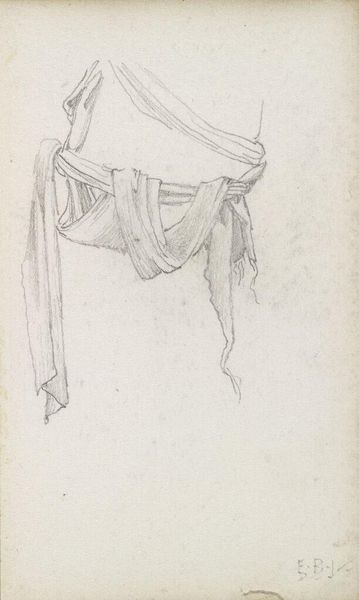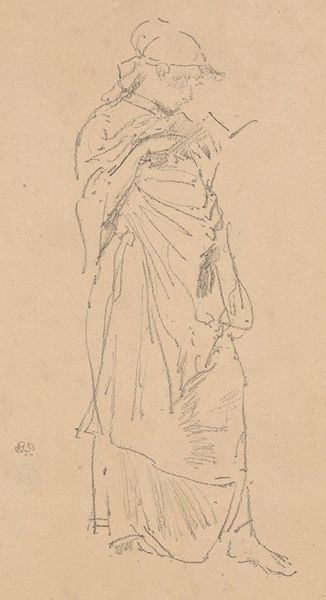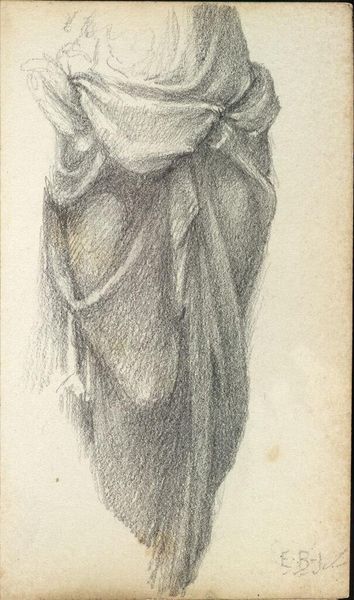
Drapery Study with Hands; verso: Drapery Study c. 19th century
0:00
0:00
Dimensions: 13.4 x 9.4 cm (5 1/4 x 3 11/16 in.)
Copyright: CC0 1.0
Curator: This is Edward Burne-Jones' "Drapery Study with Hands; verso: Drapery Study," a pencil drawing residing here at the Harvard Art Museums. Editor: The cascading fabric immediately conveys a sense of classical composure, doesn't it? Almost like a Grecian statue swathed in dignity. Curator: Absolutely. Drapery studies like these were critical for artists in the 19th century, especially those associated with the Aesthetic movement, as it allowed them to understand the interplay of light and shadow on fabric, essential for depicting classical figures with realistic garb. Editor: The folds suggest a kind of dynamic energy, even though it's static. There's a controlled tension that hints at hidden movement or purpose within the cloth itself. Curator: Precisely, this sketch serves as a window into Burne-Jones' artistic process, and highlights the importance of drapery in conveying symbolic meaning, not just mere clothing, within his grander narrative paintings. Editor: It makes you wonder about the stories hidden within those folds, the figures that might have worn it. A powerful reminder of the symbolic potency that even the most mundane objects can hold.
Comments
No comments
Be the first to comment and join the conversation on the ultimate creative platform.
